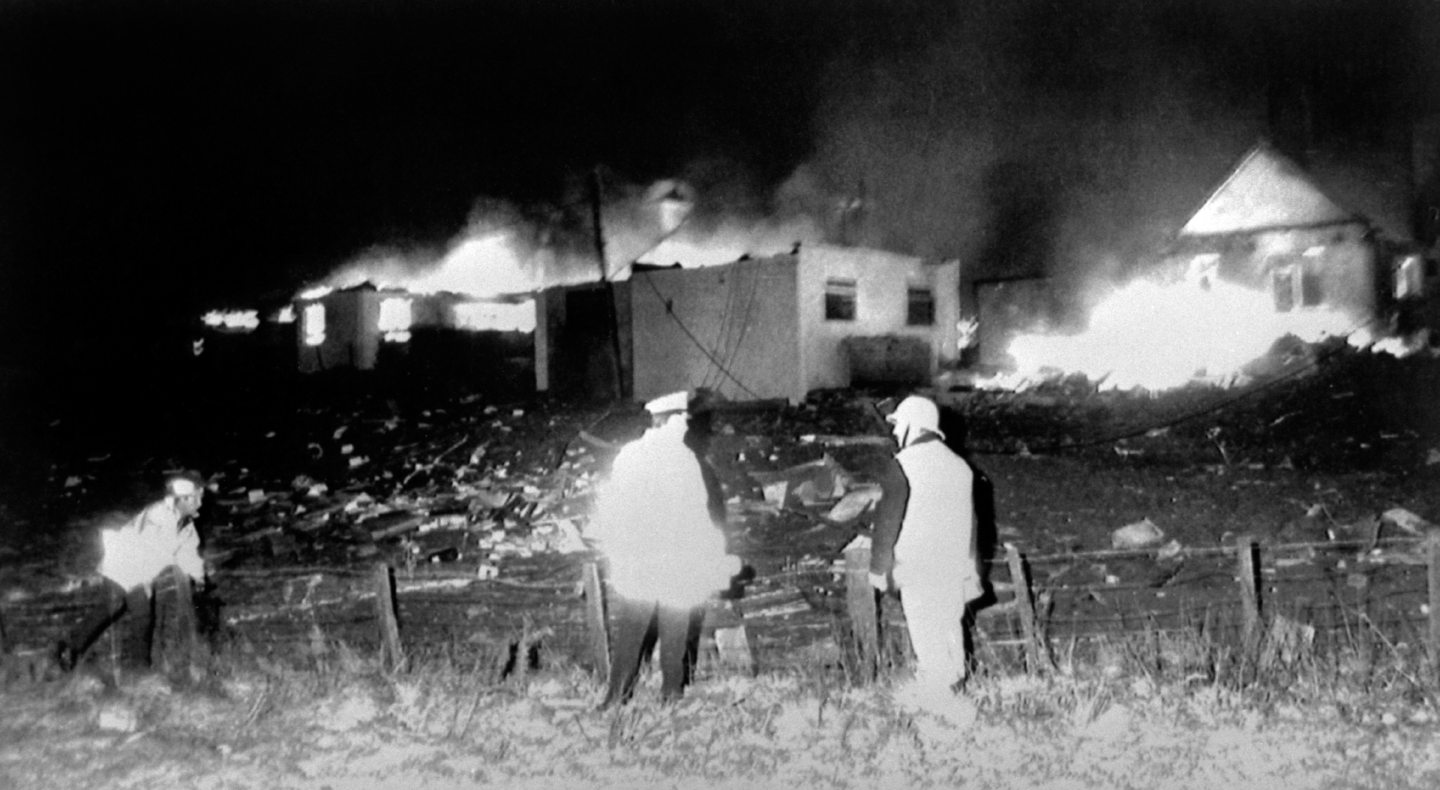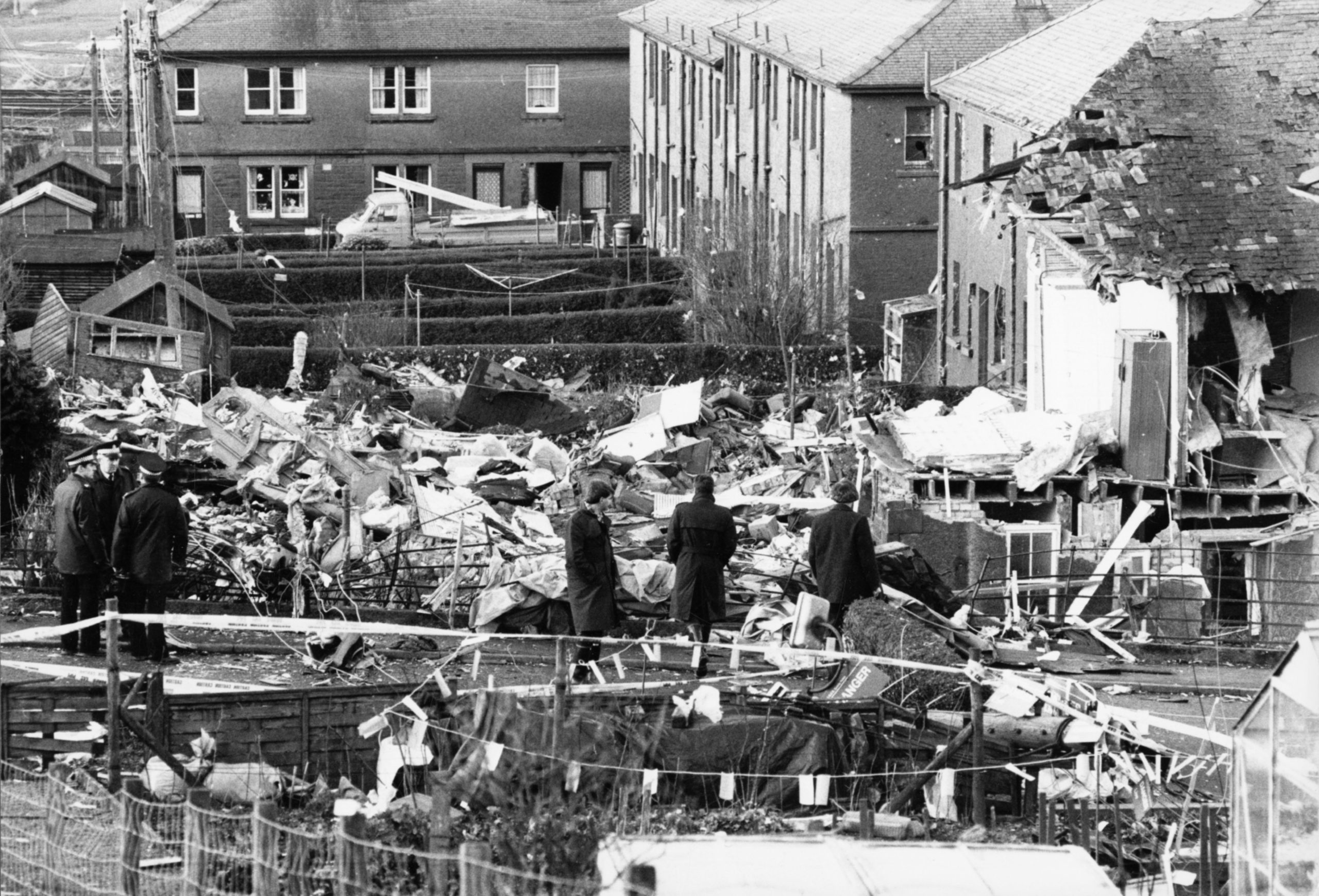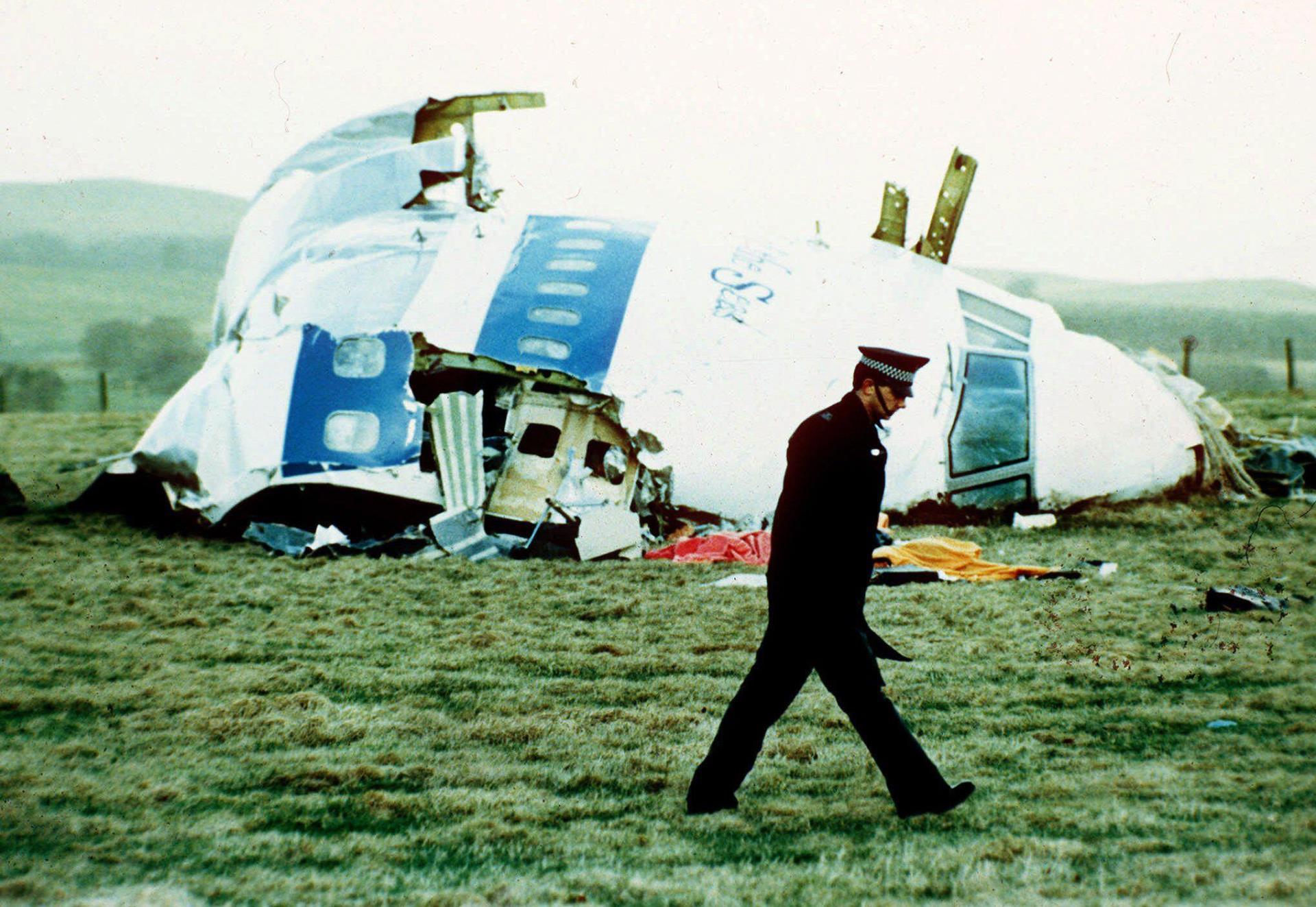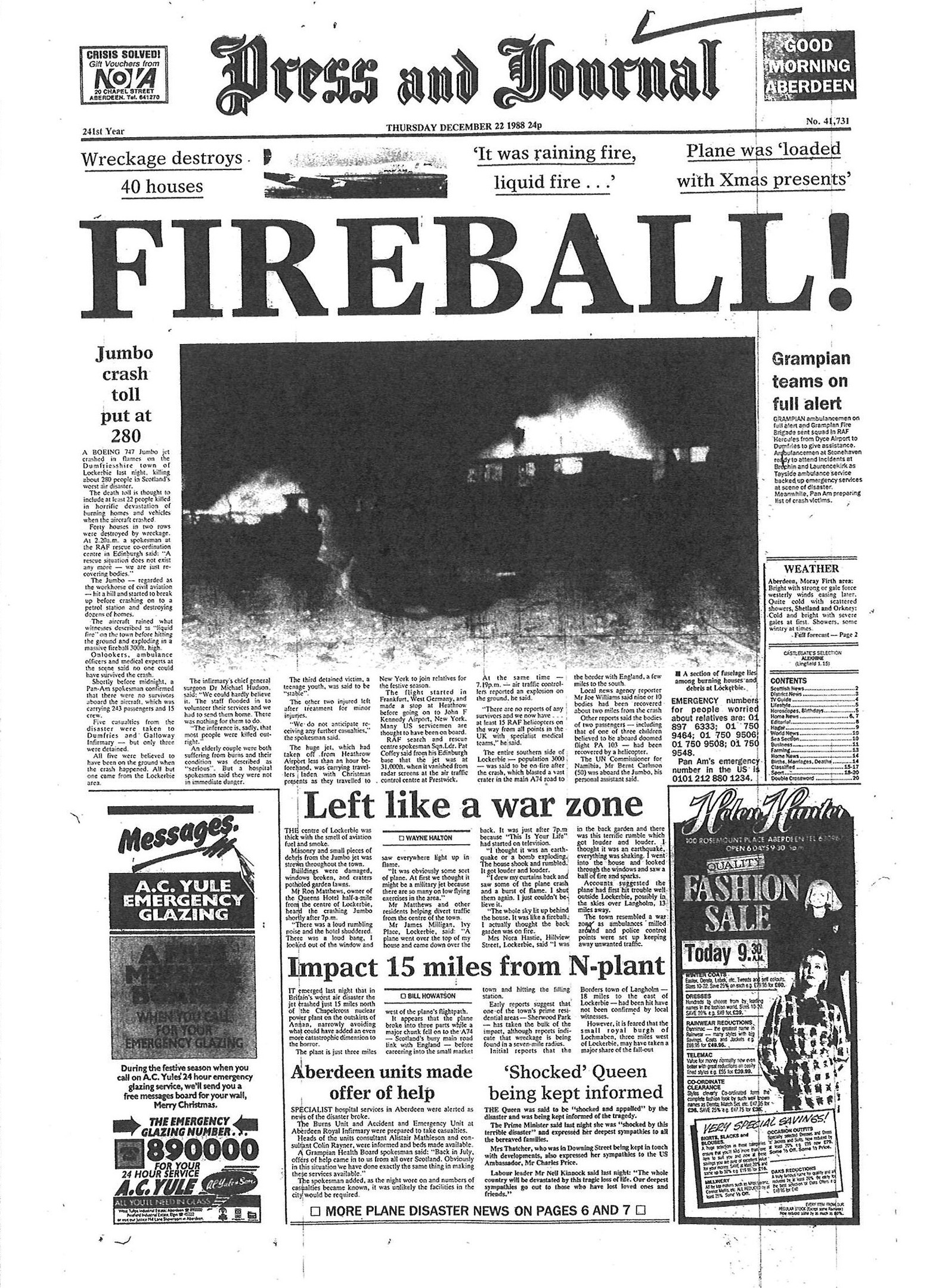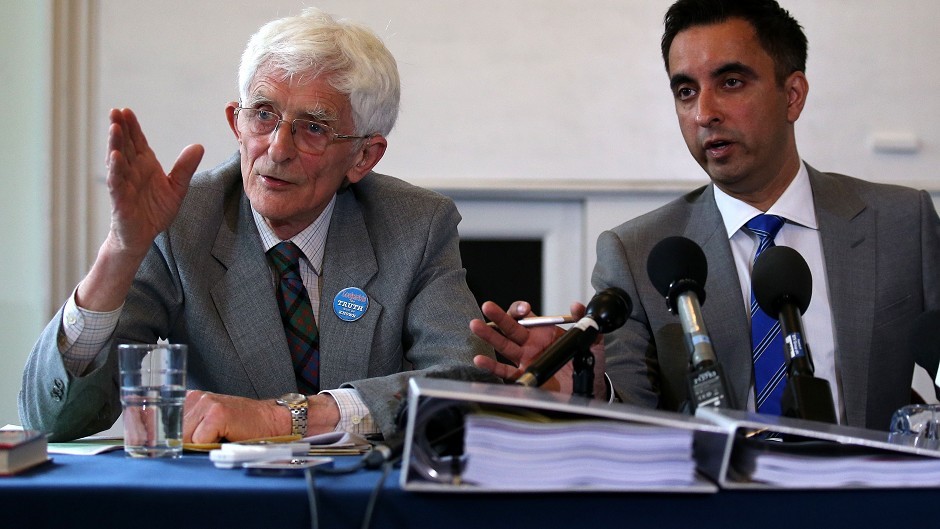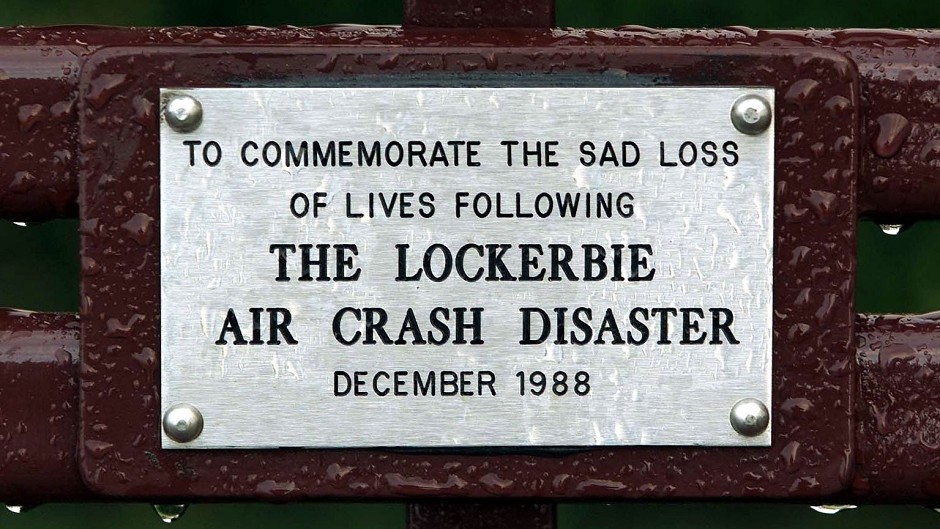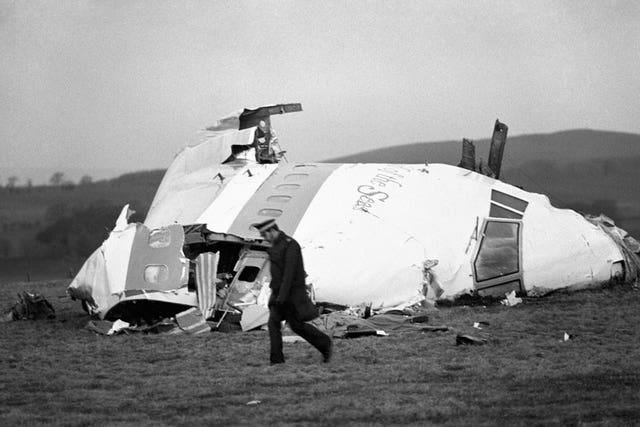
One survivor recalled it thus: “There was this enormous crump. And then there was a whoosh and, suddenly the whole sky turned orange, and there were flames hundreds of feet up into the air.”
It was at just after 7pm on Wednesday, December 21 1988, when life changed irrevocably for the people of Lockerbie and the passengers and crew of Pan Am flight 103 whose fates collided with devastating consequences.
Yet even now, 34 years later and with fresh headlines in the world’s media this week, the uncomprehending, haunted faces of those who were caught up in the worst act of terrorism on British soil remain painfully seared on my mind.
437 lives lost in two disasters
The following day, a combination of shock, horror and desolation was evident among the townspeople, 11 of whom were among the 270 who died in the conflagration.
Don’t forget this happened less than six months after the destruction of Piper Alpha and loss of 167 lives in the North Sea, but while the Cullen Report laid out the faults which contributed to the carnage on the oil platform, there has been nothing but endless theories, buck-passing, prevarication and unanswered questions for the families and loved ones of those who perished in south-west Scotland four days before Christmas.
The overriding impression for a journalist arriving at the scene was of a community numb with grief and loss. One of the residents said simply after surveying the wreckage in Sherwood Crescent: “They were here one minute. Then they were gone.”
A decade later, I returned to Lockerbie and discovered that, although a veneer of normality had returned, allied to an impressive house rebuilding programme and the creation of new leisure facilities, the atrocity was still taking its toll.
This is one thing which those unfamiliar with tragedy may struggle to fathom, but the ripples extended in every direction. As with Piper Alpha, some people simply never recovered. And their names deserve to be remembered more than any bomb-maker.
In the more than three decades since the atrocity occurred, just one man – Abdelbaset al-Megrahi – was convicted at Kamp Zeist, a Scottish court which convened in the Netherlands in 2000, following the intervention of South African president, Nelson Mandela, who brokered the deal with Libyan leader Muammar Gaddafi.
Al-Megrahi died from prostate cancer in 2012 after controversially being allowed to return home on compassionate grounds to Libya, but many people, including the relatives of some of the families who lost loved ones, were never wholly convinced that he was a major figure in the conspiracy which destroyed hundreds of lives.
Will another trial be arranged?
However, it emerged this week that American prosecutors have captured and detained Abu Agila Mohammad Masud, whom they accuse of assembling the device which blew up Pan Am 103, though that claim has yet to be proved in a court of law.
Scottish authorities will travel to the United States to discuss the next steps in the days ahead, but there have been so many twists and turns in the Lockerbie saga that residents are wary of media speculation. Some, such as Dr Jim Swire, who lost his daughter, Flora, are not convinced the Libyans were even responsible for her death.
He said this week: “I think (the trial) should not take place in America. In view of what we know about how Scotland handled the case, it should not take place in Scotland.
“There are so many loose ends that hang from this dreadful case, largely emanating from America, that I think we should remember what Mandela said and seek a court that is free of being beholden to any nation directly involved in the atrocity itself.”
The families have different opinions and are not experts in international diplomacy. What do they do recognise is the dreadful human toll of the outrage and how, while Pan Am went out of business, even as other air companies boasted of their exemplary safety record, the impact of those on the flight and in Lockerbie brought sustained agony.
Kathleen Flannigan, 41, her husband, Thomas, 44, and their 10-year-old daughter, Joanne, were all killed instantly when an explosion ripped through their house at 16 Sherwood Crescent. Their bodies were never found; they had been atomised in the blast. Their 14-year-old son, Steven, witnessed a fireball engulfing his home from a neighbour’s garage, where he had been repairing his sister’s bicycle.
Grief enveloped the survivors
Their other son, David, 19, was in Blackpool at the time and was forced to confront a scene straight from a Dore vision of hell. He later turned to alcohol and drugs and died from heart failure in Thailand in 1993, aged just 24.
Steven, meanwhile, despite seeking a fresh start in England, couldn’t avoid being a prisoner of the past. He died in August, 2000, struck by a train in Wiltshire.
A whole family had been devastated by what happened on that December night.
It is hardly surprising that Lockerbie remains inextricably linked with something terrible, as does Dunblane, Hungerford, Aberfan… other communities which were thrust into the spotlight because of disaster and catastrophe.
But what impressed many of us who visited the town in the late 1990s was the determination of most members of the community not to be frozen in time, not to remain vengefully obsessed towards those who had perpetrated the attack.
As one resident told me: “We had to start again and find things to do to take our minds off it. But there were so many young people killed [including 35 students from Syracuse University] that we recognised others were a lot worse off than us.
“We knew their families would want to come here and try to make sense of what had happened. So we made up our minds to be there for them in whatever way we could.”
Next week, on the 34th anniversary of the disaster, wreaths will be laid at a memorial garden in Lockerbie and ceremonies will also be held at Syracuse University and Arlington National Cemetery in Virginia.
‘It is part and parcel of who I am’
The residents, including retired priest Patrick Keegans, who was in the village when it happened, will never forget, but he wants to look forward as well as back. As he said: “It doesn’t go away, it stays with people, especially those who have lost family.
“But it’s part of our life now. We don’t live sad, miserable lives, but there’s a constant undercurrent. The memories stay with me, they are part and parcel of who I am now.”
At least, he was spared. So, too, was Kara Weipz, from New Jersey, who lost her 20-year-old brother, Rick Monetti, one of the Syracuse students.
The mother-of-three, who is president of the Victims of Pan Am Flight 103 group, shares Mr Keegans’ feelings of tristesse, but she is also proud of the links which have been created and nurtured between the United States and Scotland.
She said: “We can’t change things, we can’t bring them back, but we can look at the fact that we have always honoured them in the way we live our lives and the things we do.
“Yes, the sadness takes many forms, but myself and others are also looking at what we have done in the last 30 years and how we have come together, enacted change, created our own family, and been there for one another.”
Overwhelming scale of events
William Paul, former chief reporter of the Scotland on Sunday, was involved in the Lockerbie case from that first dreadful evening when the sky rained fire over town and countryside through to the drama of the guilty verdict in the special court at Camp Zeist in the Netherlands.
“It was the scale of events that made it all seem so overwhelming,” he said. “And only a few months after the Piper Alpha disaster had claimed 167 lives in the North Sea. It seemed that all the evil in the world was concentrated in and around Scotland.
“I followed the Lockerbie investigation with all its twists and turns from first confirmation that a bomb had brought down the plane to the unlikely courtroom at the old Cold War base at Camp Zeist. Armoured glass separated the three robed judges and huddles of legal teams from families of the victims and of the accused in rows of cinema-style seating.
“A tale was told of international power politics and intrigue, of casual criminality and high statesmanship. But when the guilty verdict was pronounced in February 2001, there was a strong feeling among observers that we had not uncovered the whole truth. It was almost a sense of disappointment, an acknowledgement that matters did not end there, that there was more to come.”
The pain will never be extinguished, whatever is revealed in the courts this time round. But relatives from both countries have spoken of how the bonds of love are stronger than hate and described how, even in their suffering, they have found a shared solace.
They will not let terrorism win.
